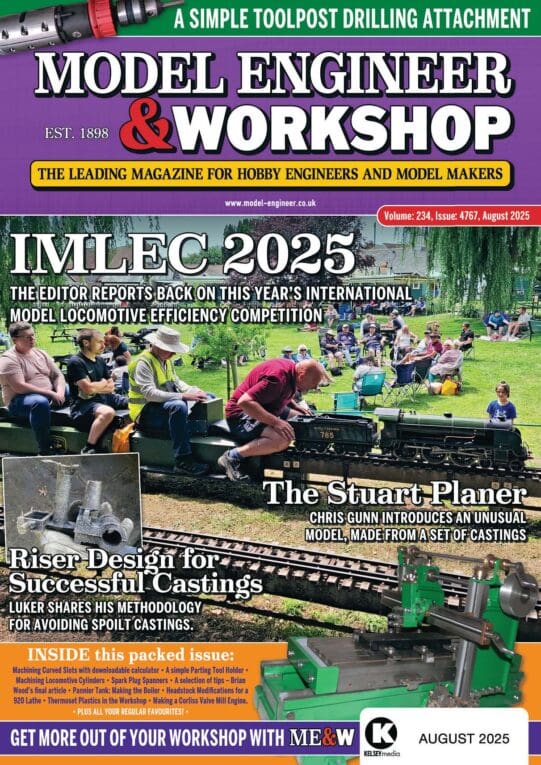BEFORE you even start screwcutting, you need to bore the inside diameter of the existing threaded hole out to the inside diameter of the new thread, plus about five thou clearance. If you don’t do this and try to just enlarge the existing thread, you may well end up with grief. The thread may well bind on the tips and give a false fit reading. Then you keep taking cuts until all of a sudden, the thread is a too slack fit.
The ID of your new 1-7/8″ x 8TPI thread can be determined in three ways.
1. Measure the size of the hole up the middle of your existing 1-7/8 faceplate. Easier said than done on a threaded hole and is assuming the old thread is correct.
2. Subtract the thread depth x 2 from 1.875. Your thread depth formula for BSW is .64 x Pitch. That is .64 x .125 = .080. Double that is .160″. So 1.875 minus .160 = 1.715. BUT, I would bore it out to 1.725 to provide five thou essential thread crest clearance each side.
3. Calculate the ID bore using the formula OD minus 1.2/TPI which is 1.875 – 1.2/8, = 1.875 – .150 = 1.725. Exactly the same as above! Fancy that. (This formula comes from Martin Cleeve’s book Screwcutting in the Lathe. )
Once you have bored the existing threaded hole out to 1.725″ diameter, then you can start screwcutting. As only about a third or so of the original thread will be left after boring out the ID, your job will be so much easier. You will not be cutting full length along the tool cutting edges right from the first cut.
You will need to set your tool bit to match the remains of the old thread, but alignment as you can see from the partial thread that is left is not super critical. As long as it is close enough, all will be well.
Then you will need to touch off your tool bit on the freshly bored ID and start working on your thread depth from there. Finished depth should be THEORETICALLY the calculated .080″. But as Yogi Berra said, theory is the same as practice in theory. In practice it ain’t. Factors including the extra clearance we bored in the ID hole, radius (or lack of) on the cutting tool tip and boring bar spring come into play, as well as slop and flex in the machine.
So when you get down to about .070″ thread depth, or even a bit before, you will need to start the “try and fit” process, checking how your male thread fits into the female thread being machined and take light cuts until it fits. Make sure to remove burrs from the crest of the new thread with a file etc before trying the fit.
old mart.





